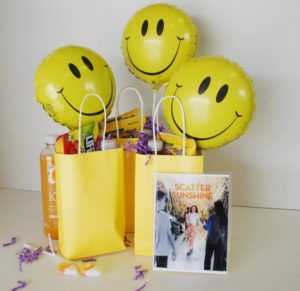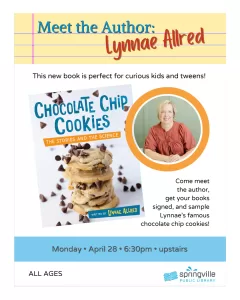Are You Ready to Become a Cookie Scientist?

Here’s the sweetest way to connect across generations—without video calls where no one knows what to say, toy clutter all over the house, or complicated activities—just simple, low-mess fun that sparks curiosity, builds memories, and makes learning feel like play.
This isn’t just a book—it’s a recipe for creating connections, igniting curiosity, and building family traditions that last. Whether you’re baking together in person or sharing a virtual moment, you’ll have everything you need to make learning fun, simple, and exciting. Plus, join exclusive events that make the whole experience even sweeter!
The goal of this book is to help you learn to think like a CHEF!
A cook can follow a recipe, but a chef can create one. People who learn to think like chefs will change the world.
Try some of the activities below with friends or family members. You’re on your way to becoming the next cookie scientist!
Meet Ruth Wakefield: Inventor
First, let’s meet the woman historians credit with inventing the Chocolate Chip Cookie.
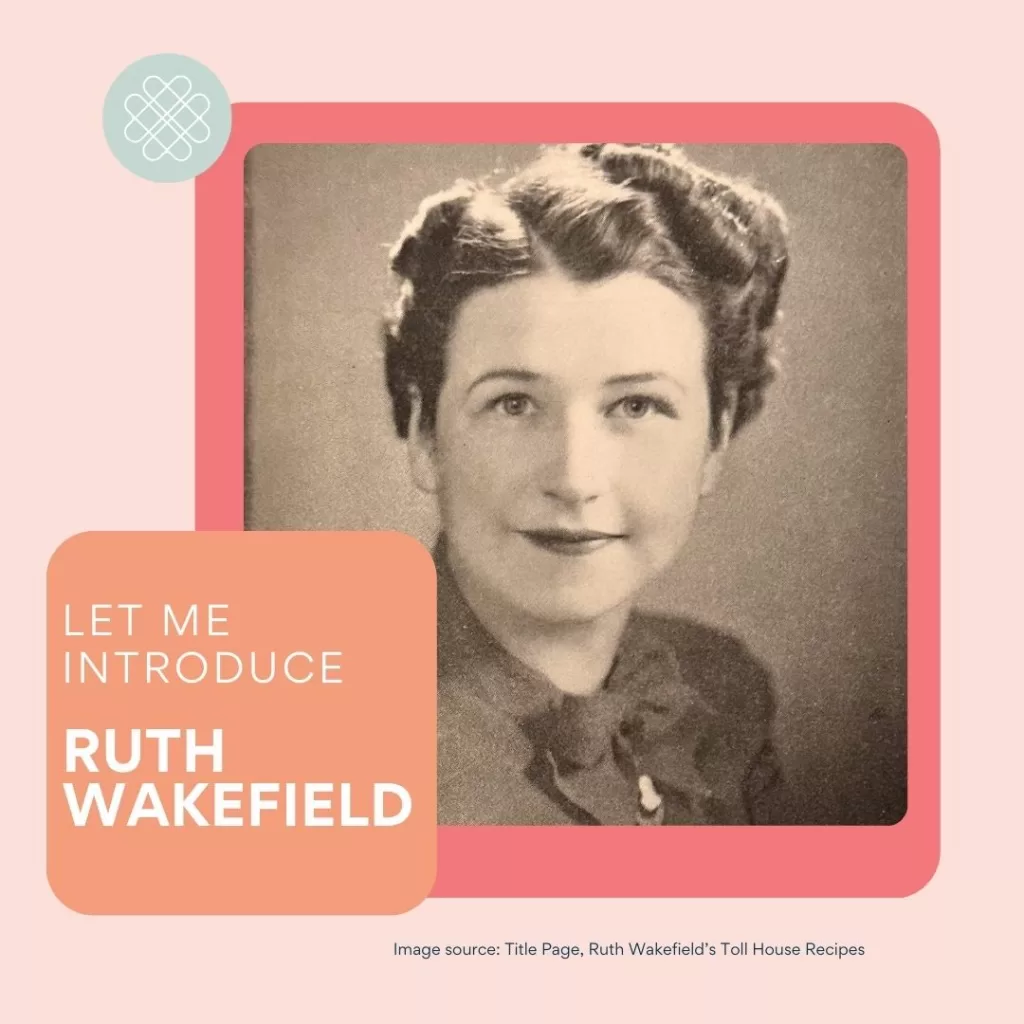
Activity #1
The story is often told that Ruth invented chocolate chip cookies by mistake when she mixed some chocolate into some cookie batter, hoping to make chocolate cookies. But many historians agree that this couldn’t have been the case. She was an experienced culinary scientist and restaurant owner. She had very likely worked with chocolate enough to know what would happen when she mixed some chocolate chunks into some batter. Either way, aren’t we glad she tried it?
For your first chocolate chip cookie activity, follow the recipe in the book but try substituting at least one of the ingredients for something different and see whether or not you can invent the next world-famous cookie recipe.
Here are a few ideas to help you brainstorm about what you would add as part of your experiment:
- White chocolate chunks and macadamia nuts (OK, somebody already discovered this combination, but it’s delicious!)
- Chopped up pieces of your favorite candy bar
- Dried fruit such as blueberries, apricots, dates, or cranberries
- Candy sprinkles, toffee bits, chunks of peanut butter cups, M&M’s candies
- Any kind of nuts: peanuts, walnuts, almonds, pistachios
- Bacon bits
- Yogurt raisins
- Caramels, cut into chunks
- Crushed up potato chips
- Lemon, lime, or orange zest
- Crispy cereal bits
Meet Joseph Dombey: One Reason Americans Don't Know Beans About the Metric System.

Images courtesy Wikimedia Commons, Public Domain in the United States.
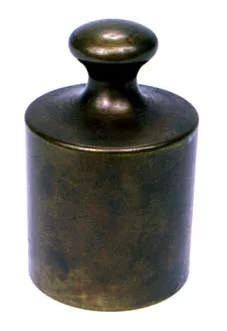
Joseph Dombey was the man who sailed toward the United States with a unique item in his luggage. It was a small kilogram weight like the one you see here.
Unfortunately, once the journey started, Dombey’s boat was blown off course in a storm. And next, it was captured by PIRATES! (British Privateers). Dombey died in captivity and his captors sold his possessions at auction. That important kilogram weight never reached the United States. Historians believe that if it had, the government would have adopted the metric system of measuring. But, alas, Matey! That is not what happened!
Activity #2:
Try measuring the ingredients for your cookies using a system you don’t typically use. Which system do you like better, and why?
Customary Recipe:
1 cup granulated sugar
1 cup brown sugar
1 1/4 cups soft butter
2 eggs
1 teaspoon vanilla extract
3 cups all-purpose flour
1 teaspoon salt
1 teaspoon baking soda
1 1/2 cups chocolate chips
Metric Cookie Recipe
220 grams granulated sugar
200 grams brown sugar
280 grams soft butter
2 eggs
1 teaspoon vanilla extract
375 grams all-purpose flour
1 teaspoon salt
1 teaspoon baking soda
270 grams chocolate chips
Meet the Egg of The Common Murre:

Museum de Toulouse, CC BY-SA 4.0, Wikimedia Commons
This unassuming little egg is laid by a seabird known as the Common Murre. During the California Gold Rush, eggs were so hard to come by that miners would pay a lot to get one.
Two men who hadn’t quite struck it rich mining for gold decided to give eggs a try. Their names were “Doc” Robinson and Orrin Dorman. They rowed a boat out to rocky Farallon Island near San Francisco and gathered as many seabird eggs as their boat could carry.
On the way back to shore, their overloaded boat almost sank in the rough ocean waves. They nearly lost their lives. But they sold the eggs for so much money that others decided to give egg gathering a try. But in the process, egg gatherers started a small war and nearly destroyed the seabird population.
You’ll learn more of this fascinating story on page 39 of the book.

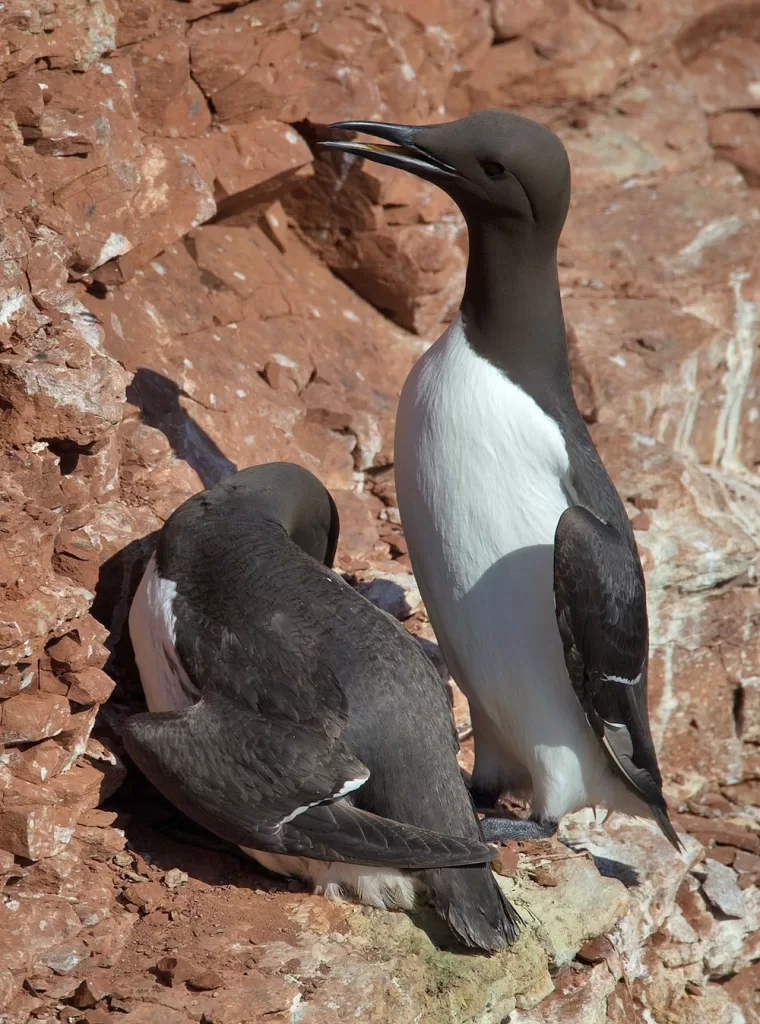
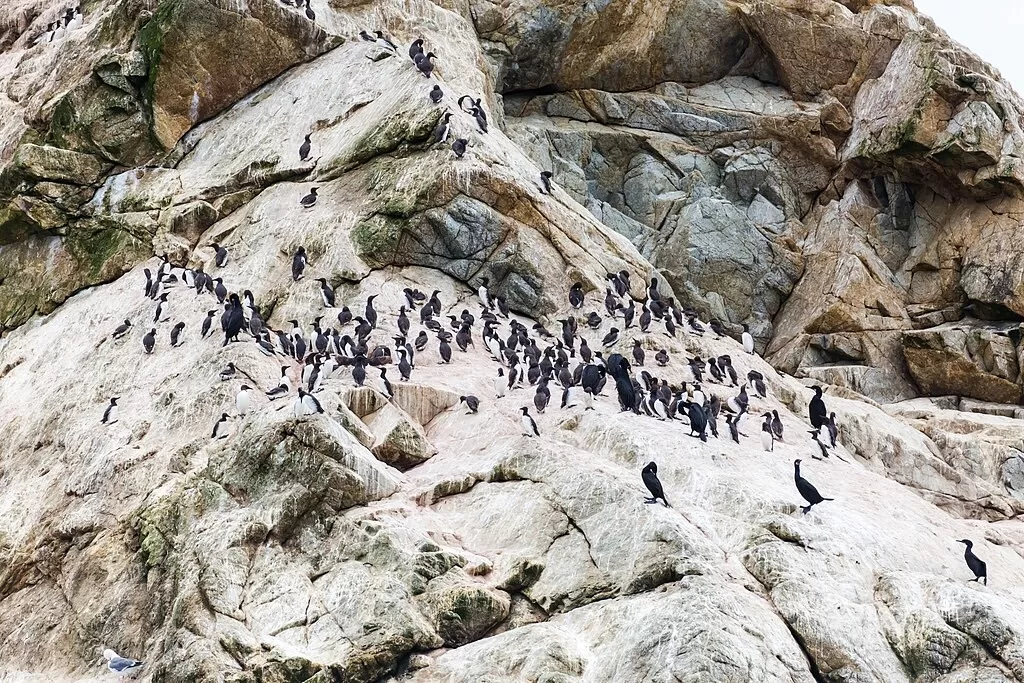
Above, you can see images of Farallon Island in the 1850s, the Common Murre bird, and Farallon Island as it looks today, with a healthy seabird population.
Because Murre eggs taste a little weird unless they are fresh, egg hunters in the 1840s would crush every egg on the island, then return the next day to gather freshly-laid eggs to sell. You can imagine what this did to the seabird population.
One of the things people learned from this experience (aside of the fact that people really miss eggs when they can’t get them), is that there are consequences when humans are so greedy that they forget to think about how their actions impact other animals, other people, and the environment. The destruction of the seabird population was only one of the unintended consequences of The California Gold Rush, and learning about it helps us think about our own actions in the world we live in today.
As you take a closer look at some of the science and the stories behind the invention of the chocolate chip cookie, you’ll be learning the process of discovery that all great scientists use. Sometimes, we can take facts at face value. Other times, it pays to look deeper to discover more truth. As you learn to think like a chef, your abilities to think critically will develop and improve. You will use these skills every day of your life, and learning to think like a chef will help you succeed in any vocation you choose.

